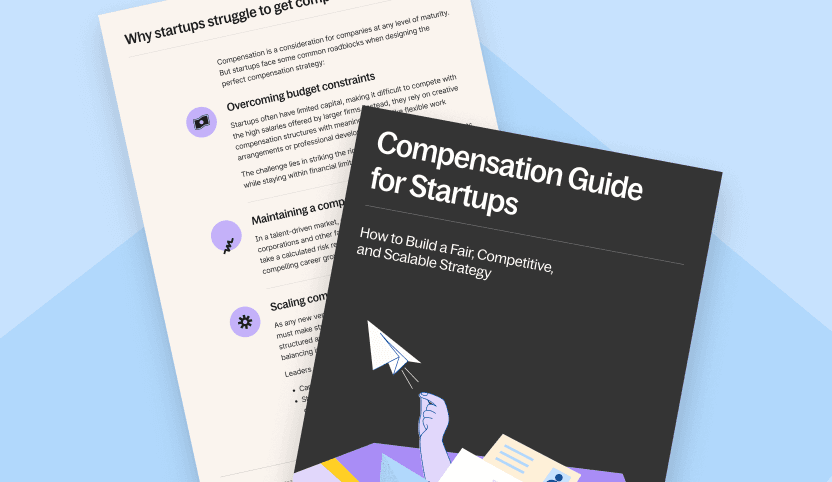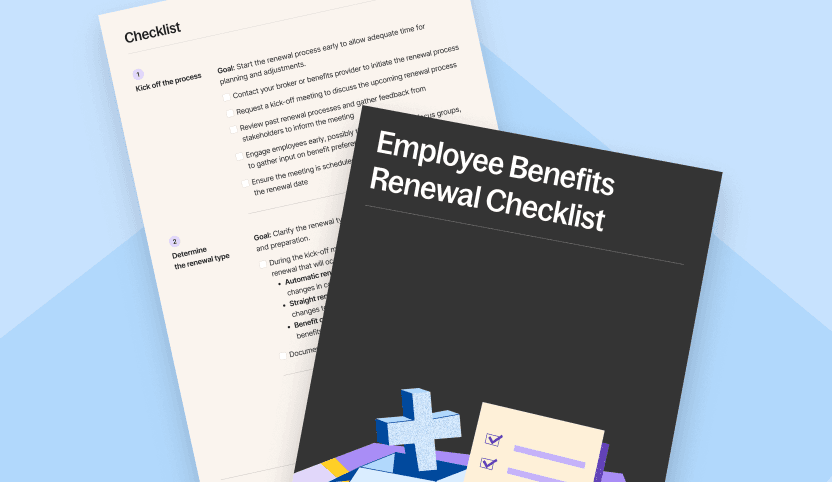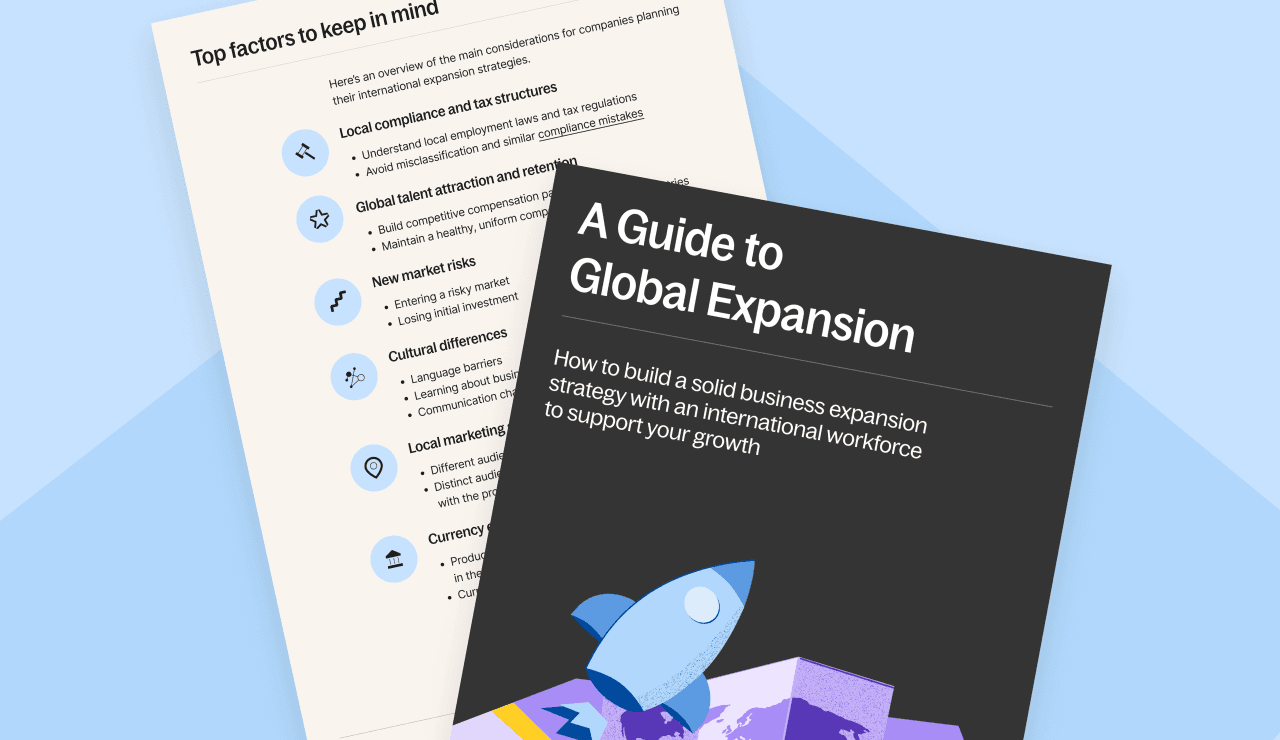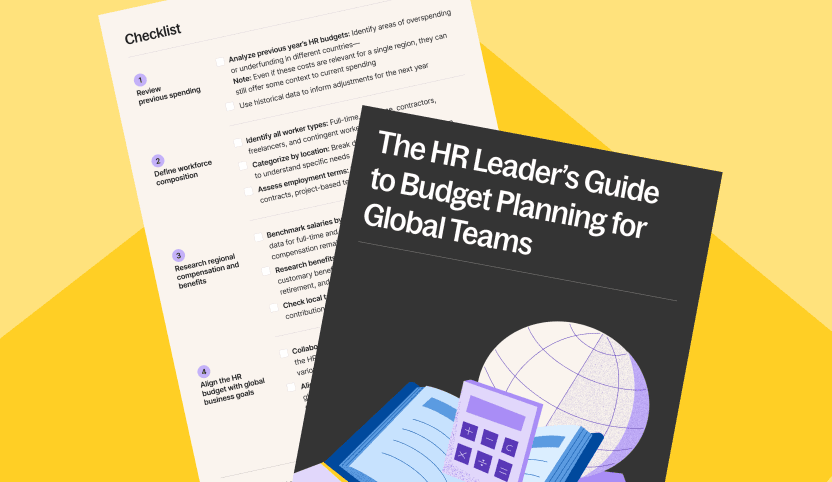Strategic Planning Guide for Global Recruitment and Hiring
Global hiring
Global HR

Global recruitment opens the door to incredible opportunities: access to specialized talent, round-the-clock operations, and the diversity that drives innovation and financial performance.
But with opportunity comes complexity. Each new country means new labor laws, tax codes, and compliance risks. Misclassification can lead to penalties, while poor planning can slow hiring or inflate costs.
This is why we created the Strategic Planning Guide for Global Recruitment and Hiring.
Whether you’re building your first cross-border team or scaling to dozens of markets, this guide walks you through every step of creating a hiring strategy that aligns with your business goals, while keeping compliance front and center.
Guide overview
In this guide, you’ll learn:
- How to link global hiring decisions to business strategy
- The essentials of headcount planning and forecasting
- Which countries and worker types best fit your needs
- How to design roles and benchmark compensation globally
- Strategies for sourcing, interviewing, and onboarding international talent
- Guardrails for compliance, tax, and operational readiness
- Final checklists to ensure you hire effectively, confidently, and compliantly
Who is this guide for
This guide is built for leaders who want to take the guesswork out of global hiring:
- Human Resources Directors and Talent Acquisition leaders tasked with sourcing, evaluating, and hiring talent across borders
- People Ops and compliance teams ensuring contracts, benefits, and labor classifications stay airtight
- Finance and strategy leaders looking to align hiring decisions with cost optimization and growth strategy
- Founders and executives driving international expansion and needing a structured plan to hire without compliance headaches
If you’re asking yourself “Where do we hire, who do we hire, and how do we do it right?” this guide is for you.
Get the guide now. Plan smarter. Hire globally. Stay compliant.
FAQs
How does global recruitment work?
Global recruitment involves sourcing and hiring talent from multiple countries, navigating diverse labor laws, cultural norms, compensation expectations, and logistical hurdles. It requires tailored employer branding, international sourcing channels, cross-border compensation strategies. Sometimes, it also requires support from EORs (Employer of Record) or global recruitment partners.
How does global hiring work?
Global hiring is the process of recruiting and employing talent across international borders. Here’s how it works step by step:
- Define the role and location: Choose the position and the country where you want to hire
- Pick a hiring method: Choose between opening a local entity, using an Employer of Record (EOR), or hiring independent contractors
- Ensure legal compliance: Each country has unique rules for employment contracts, taxes and social contributions, benefits and holidays, and termination rights
- Onboard the worker: Once you hire someone, you’ll need to: provide localized contracts, handle payroll and benefits in local currency, maintain country-specific compliance with employment laws and data protection, offer access to training and support
- Stay compliant long-term: As long as the worker is active, you’ll need to monitor regulation changes in the worker’s residence country, renew contracts when needed, conduct regular audits or reviews
Platforms like Deel help simplify this with unified tools and localized compliance baked in.
How does international employment work?
International employment refers to hiring staff who may work remotely from another country or be based in a foreign location. It involves managing compliance in foreign jurisdictions, tax filings, benefits alignment, and employment contracts, handled either via direct employment, local entities, or through third-party partners like EORs.
What does an international job mean?
An international job typically means a position based in a country different from the employee’s home country or one that serves a global or multicultural market. It may require cross-border coordination, travel, or cultural fluency, depending on the role and employer.
What are the four approaches to international recruitment?
Organizations typically follow one of four staffing strategies:
- Ethnocentric: Key roles are filled with home-country nationals to ensure cultural control and consistency
- Polycentric: Local hires manage subsidiaries, improving adaptability and reducing relocation costs
- Regiocentric: Regional talent is leveraged across a geographical zone, balancing local understanding with scale
- Geocentric: The best global talent is hired regardless of nationality, aiming for global alignment and excellence
What are the advantages and disadvantages of recruiting globally?
Advantages include:
- Access to a broader pool of skilled professionals with hard-to-find skill sets
- Enhanced innovation and diversity contributions
- Potential cost savings and competitive positioning
- Coverage across multiple time zones
Disadvantages include:
- Legal, tax, and compliance complexity across jurisdictions
- Cultural and communication challenges
- Higher onboarding costs and potential lower retention due to disconnection
Is it safe to hire through a contractor platform long-term?
It is not always safe to hire through a contractor platform long-term. While contractor platforms make it easy to quickly onboard talent, they carry compliance risks if used long-term. Misclassification is the biggest issue—if a contractor is effectively working like an employee (fixed hours, single client, company tools), tax authorities may reclassify them and impose back taxes, fines, or legal liabilities on your business.
Use contractor platforms for:
- Short-term, project-based work
- Independent contractors with multiple clients
Consider switching to an Employer of Record (EOR) for long-term, strategic roles or when a contractor relationship starts resembling full-time employment.
Can I convert a contractor to an employee?
Yes, you can convert a contractor to an employee. In fact, it is often recommended, especially if they’ve become essential to your business or show signs of being misclassified.
To convert:
- Review the current relationship: Are they working fixed hours, reporting to a manager, or using your tools?
- Choose the employment path: Either hire them directly (if you have a local entity) or use an EOR in their country
- Adjust the contract and compensation: This may involve switching from a freelance contract to a compliant local employment agreement, and offering benefits or adjusting taxes
Tools like Deel or similar platforms can help make this transition seamless while maintaining compliance.
What is the meaning of global talent?
Global talent refers to employees or contractors sourced from anywhere in the world, valued for their diverse skills, perspectives, and experiences. These workers can operate across regions and contribute to global strategy and innovation. These work relationships can take various forms, including full-time employment, freelancing, project-based contracts, or hiring through an Employer of Record (EOR), depending on legal and business needs in each location.
What kinds of technology enable global hiring?
Key tools that enable global hiring include:
- Applicant Tracking Systems (ATS) for sourcing and organizing candidates
- AI-powered screening and matching algorithms that assess fit and surface talent quickly
- Video interviewing platforms, chatbots, and digital onboarding systems for efficient global process implementation
- HRIS and global hiring dashboards for cross-border data, compliance tracking, and hiring analytics
More resources
- Strategic Workforce Planning: The Complete Guide for Future-Proofing Your Talent Strategy
- Top 7 Repeatable Strategies for Recruiting Top Talent
- Remote Work Enablement: A Guide for Global Teams
- Don’t Let Distance Narrow Your Talent Pool
- Global Employment Comparison: Explore Our Free Tool
- The Ultimate Guide to Managing Global Teams: HR & People Ops Strategies











